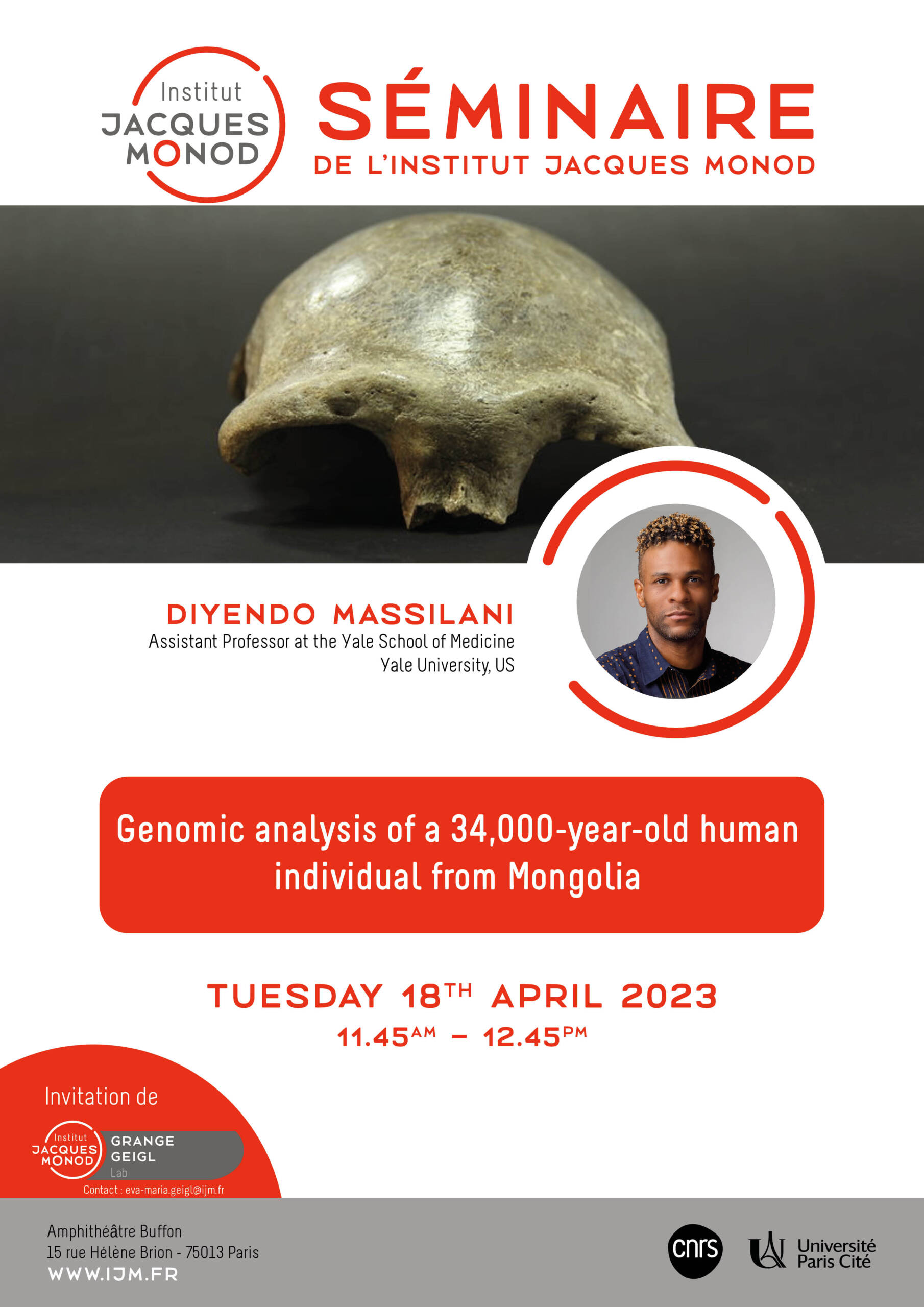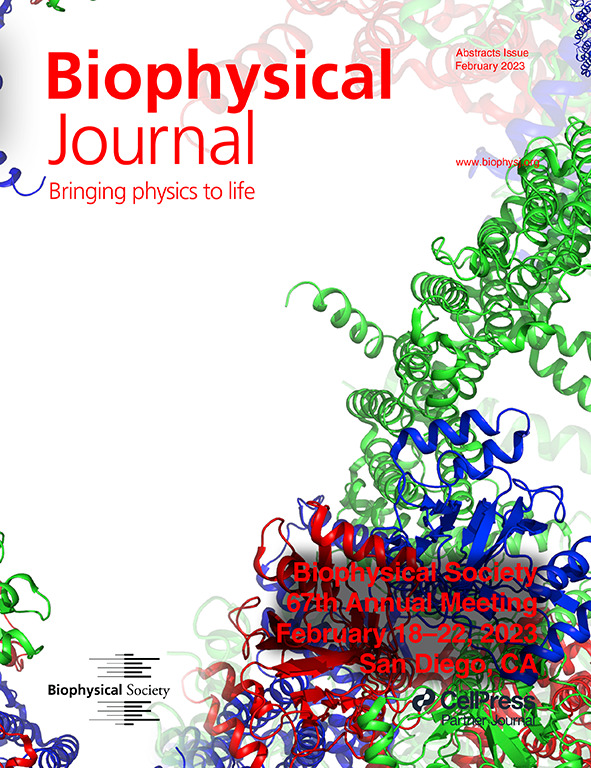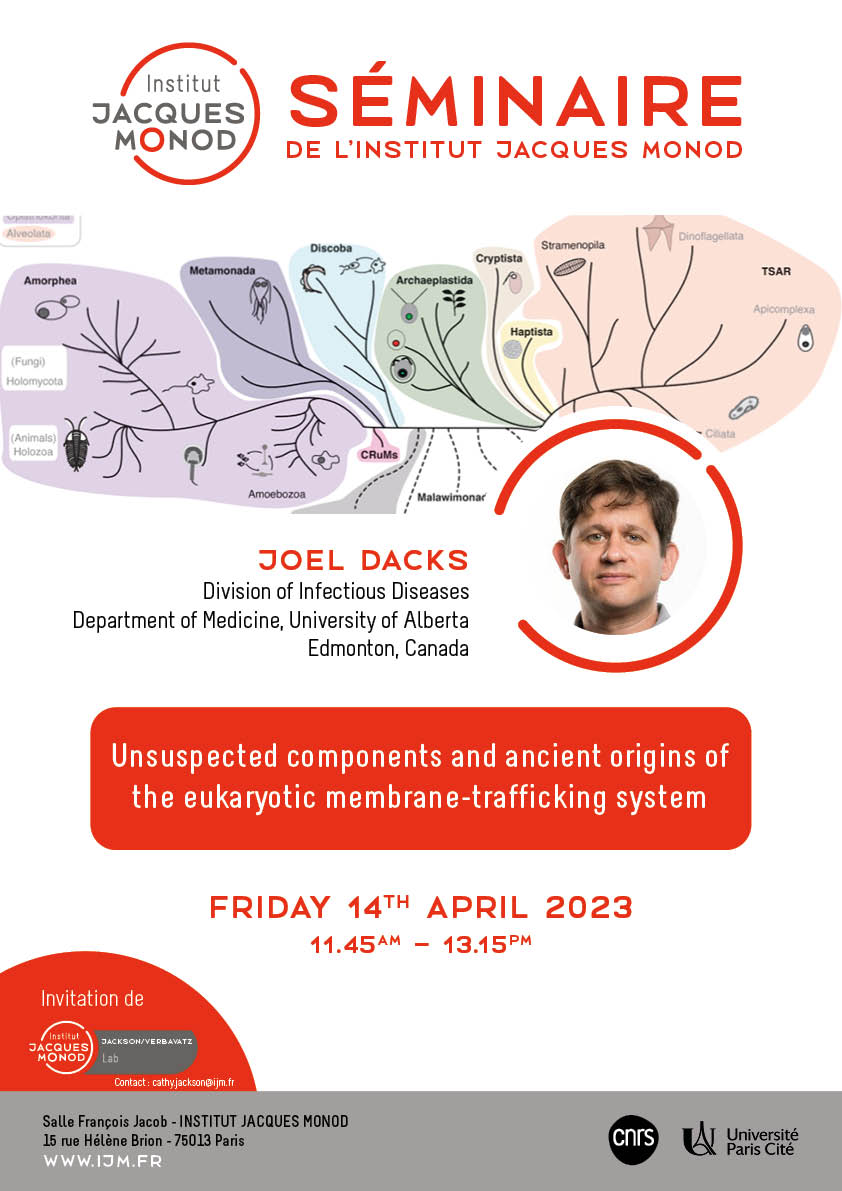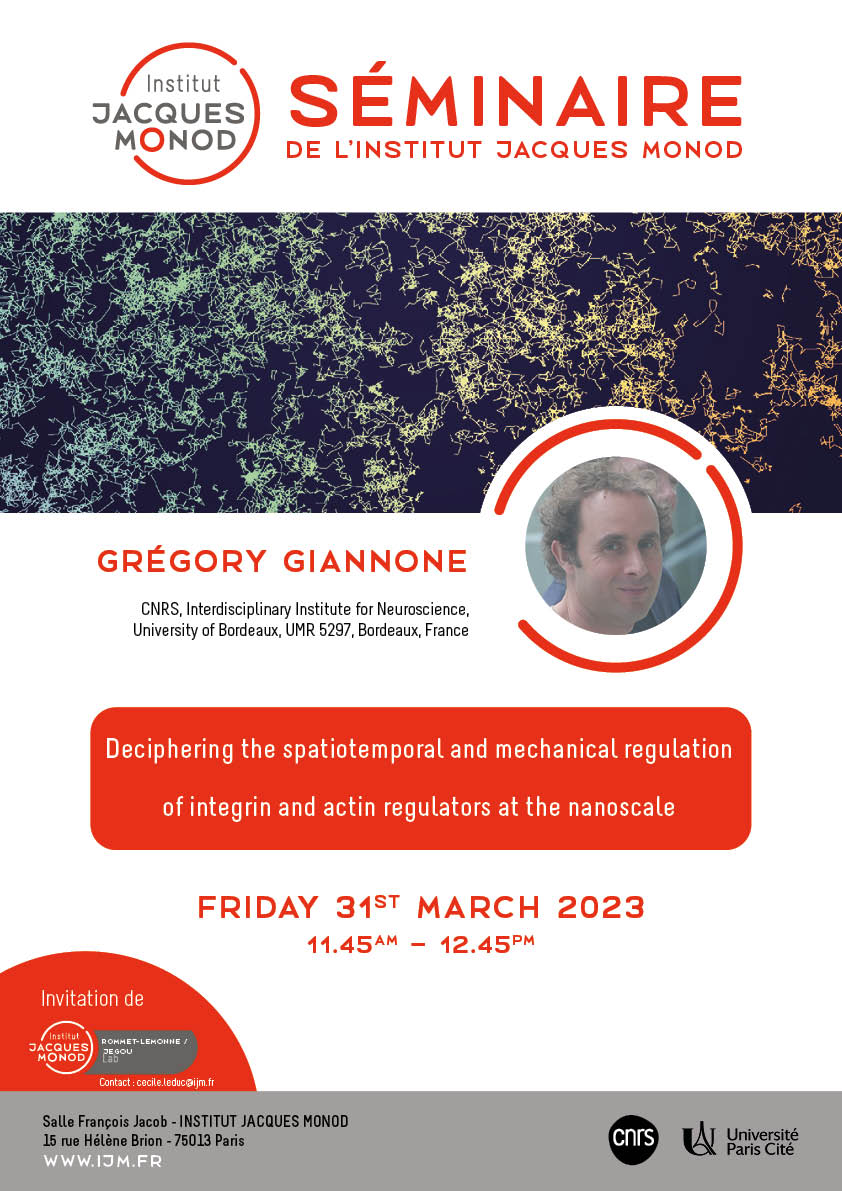Invité par Eva-Maria Geigl et Thierry Grange, Diyendo Massilani va donner un séminaire IJM le mardi 18 avril 2023 sur le thème :
"Genomic analysis of a 34,000-year-old human individual from Mongolia"
We investigate the evolutionary history of modern and extinct human populations using ancient DNA. Our focus is to retrieve and sequence DNA from archaeological…











